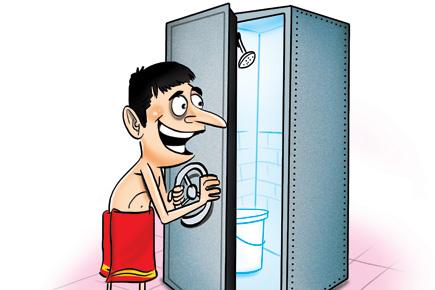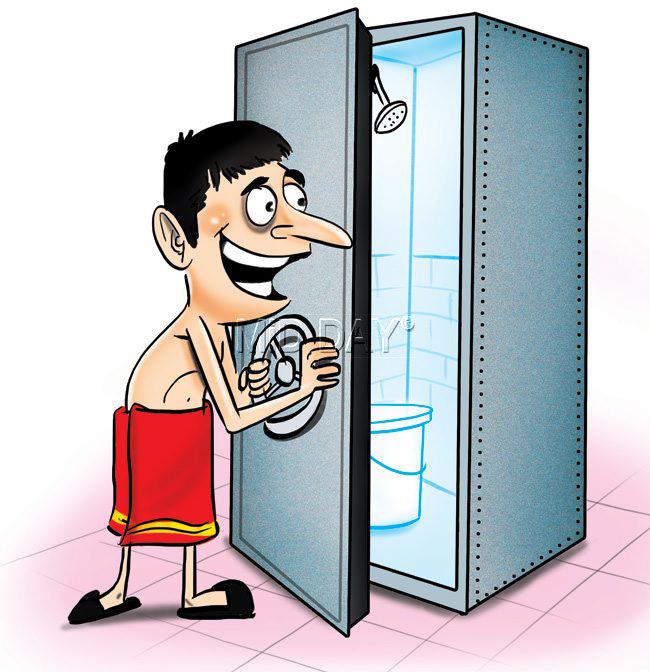Are you willing to turn vegetarian because vegetables require much less water — and land — to produce than meat

Water
 Are you willing to turn vegetarian because vegetables require much less water — and land — to produce than meat? Will you eat wheat instead of rice, because wheat requires less water to produce? Will you bathe in half a bucket of water, because a shower wastes too much water? These may seem unthinkable options to many. But as India faces a tremendous water shortage, if we don’t become more water-efficient by choice, we will simply be forced to.
Are you willing to turn vegetarian because vegetables require much less water — and land — to produce than meat? Will you eat wheat instead of rice, because wheat requires less water to produce? Will you bathe in half a bucket of water, because a shower wastes too much water? These may seem unthinkable options to many. But as India faces a tremendous water shortage, if we don’t become more water-efficient by choice, we will simply be forced to.

Illustration / Amit Bandre
ADVERTISEMENT
Some of you may be puzzled by this column. Why is a film critic writing about water? The truth is, I have Another Life. I’ve been writing on development issues —water, gender, health, education — since 20 years, but because it is not ‘sexy’, you may not have seen it. I’ve been Consultant to the World Bank’s Water and Sanitation Program South Asia, rapporteur at the World Water Forum in Marseille, and written for the book Women Managing Water: Inspiring Stories from South Asia. Water shortage has been identified by industry and governments as one of the top three global risks. The demand for water will increase by 55 per cent by 2050, according to a UN estimate. India does not have a holistic, aggressively implemented plan to manage future demand and supply of water and energy. I’d like to share new insights to these challenges that I gained at the United Nations Water Annual International Zaragoza Conference in Spain in January.
Basically, the demand for water is like this: 70 per cent by agriculture, 20 per cent by industry and 10 per cent by households. Therefore, while the UN millennium development goal targets ending in 2015 include water and sanitation access — largely aimed at households, the post-2015 goals include water and sustainable development, through better management of the water-energy nexus, which impacts agriculture and industry as well.
As Richard Connor, lead author of the UN World Water Development Report that will be released in March explains to me, “Like the carbon footprint, the water footprint of any product can be calculated by considering how much freshwater is used and polluted in order to produce it. This is very useful in assessing what should be produced with a given amount of water, to raise the gross domestic product. For instance, producing chicken requires less water than producing beef, while producing potatoes requires even less.” In fact, www.waterfootprint.org’s water footprint calculator comes as a shocking revelation: 290 litres of water to produce 1 kg potatoes; 1,827 litres for 1 kg wheat; 2,500 litres for 1 kg rice; 6,470 litres for 1 kg tea; 19,000 litres for 1 kg coffee; 15,400 litres for 1 kg beef; and 22,500 litres for 1 kg Indian cotton!
Connor also observes that 95 per cent of all electricity produced — by coal, gas or hydropower — is water intensive, which is why ‘co-generation’ or recycling energy is important. For instance, he points out that buses and taxis in Stockholm run on biogas generated by the sludge of its water treatment plants. Major companies, including Tata Cleantech Capital, Nestle and Nokia simultaneously evaluate water and energy use, to make savings by managing scarce resources better.
More perspectives on India’s water challenges are offered by Joyeeta Gupta, Professor of Environment and Development in the Global South, University of Amsterdam. As India’s groundwater levels are falling alarmingly, and agriculture uses 70 per cent of water, she feels major rethinking is due on whether our farmers are investing in the most water-efficient crops and making money. Her recommendations for reducing water demand, include replacing sprinklers with drip irrigation, watering plants at dawn or dusk to minimise water evaporation, avoiding washing cars and growing grass, recycling waste water from reverse osmosis water filters, and closing the tap when brushing and shaving.
As for those who shudder to bathe with half a bucket of water — Narayana Murthy, former Infosys CEO, has done it for years. Besides, when you’re in hospital, the nurse sponges you using two small basins, one with soapy water, and another with clean water, for a very hygienic bath using barely a quarter of a bucket. In any case, it may be easier than imitating Bill Gates drink poop water on YouTube. You see? It’s simply a question of attitude.
Meenakshi Shedde is South Asia Consultant to the Berlin Film Festival, an award-winning critic, curator to festivals worldwide, and journalist. She can be reached at meenakshishedde@gmail.com.
The views expressed in this column are the individual’s and don’t represent those of the paper.
 Subscribe today by clicking the link and stay updated with the latest news!" Click here!
Subscribe today by clicking the link and stay updated with the latest news!" Click here!







